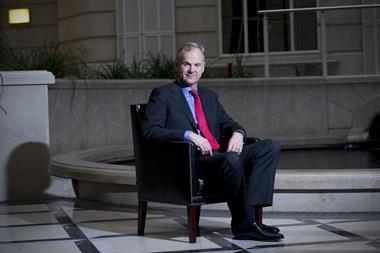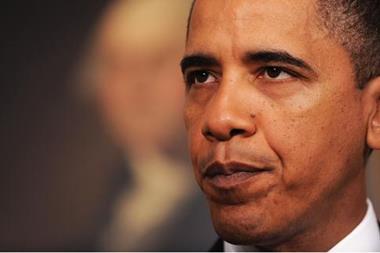Nathan Skinner talks to Jorge Luzzi, worldwide director of risk management for Italian tyre maker Pirelli.
Just like the company whose risk he now manages, Jorge Luzzi is a truly international character. Born in South America but of Italian nationality he commands six languages (Italian, Spanish, Portuguese, English, French and German) and has travelled the world extensively.
He began his career in risk management more than 25 years ago with Ciba Geigy (Novartis). When he joined Pirelli in 1988 he was tasked with heading up the insurance and risk management department based in Basel, Switzerland. In the early 1990s he moved to Sao Paolo where he earned responsibility for risk management in the Latin American region (he was also president of the Latin American risk management association for a period).
In 2002 Luzzi assumed responsibility for North America, the Far East and Australia and in 2005 he was appointed to his current position of group risk manager. He is currently based at Pirelli’s headquarters in Milan.
StrategicRISK caught up with Luzzi in Prague at the Federation of European Risk Management Associations (FERMA) Forum at the beginning of October. Already a member of RIMS, the US based risk management society, he was recently appointed to the board of directors of FERMA to replace Franck Baron, who left to pursue a career in insurance.
Luzzi is a veteran risk manager. In 2002 he received the prestigious RIMS Goodell Award for a lifetime of achievement in risk management. Speaking to him about his company and enterprise wide risk management we quickly learn why he is widely regarded, in Italy and beyond, as one of the foremost practitioners in his field.
Group wide risk
Luzzi clearly has a good grasp of what’s expected of him as a group level risk manager. One of his primary tasks, he says, is to transmit the risk management philosophy of the company to all of its facilities around the world. Pirelli has assets in the US, UK, Italy, Spain, Germany, Turkey, China, Romania, Egypt, Argentina, Brazil, and Venezuela.
‘If we analyse the risk management approach we have in China it is very different to the approach in the US,’ he says.
Explaining the problem he refers to a specific story from the 1990s that sticks in his mind. When visiting a facility in Feria de Santana in a remote part of northern Brazil, Luzzi was struck by the absence of any major fires in the facility’s loss record, despite the fact that at that time there was no Portuguese translation of the firm’s loss control manual (which tells workers what they should do to reduce the risk of fire and how to deal with an incident).
Luzzi likened the excellent loss record in the Brazilian factory with another Pirelli facility in Germany with which he was familiar. ‘The Germans followed the manual perfectly,’ he recalls. On further investigation at the Brazilian site Luzzi discovered the reason why there had never been no major fires.
‘The workers in Brazil were worried that if their factory burnt down they would have nowhere to work and they would have to abandon their families and emigrate to find work. If a fire did break out the workers said they would do whatever necessary to stop it from destroying the factory.’
The story demonstrates two very different approaches to risk management, says Luzzi. ‘One was very technical the other extremely passionate. It is my job to bring some passion to the Germans, who understand the manual fluently, and to impart some knowledge to the Brazilians, so they also learn to follow the rules.’
“Embedding that risk management culture is an ongoing process
Embedding that risk management culture is an ongoing process, says Luzzi. ‘We are much better than we were before but we are far from the place we would like to be,’ he says. ‘It is always going to be a big challenge in a company like ours that has a presence in so many countries.’
Risk engineering
Risk engineering is an important discipline that Luzzi has strived to embed across his organisation. He personally visits many of Pirelli’s factories all around the world to get the message across, meanwhile Luzzi’s risk engineering teams visit each facility at least once a year.
When he joined Pirelli over two decades ago the risk management department’s only job was to manage the group’s insurance programmes. ‘There was almost no loss prevention and risk engineering,’ he says.
He began a process of educating the company about the benefits of loss prevention, a strategy that can help reduce premiums, improve the insurability of risk and reduce business interruptions. ‘Even if a claim is covered with insurance it can prove to be a bigger problem in terms of damaging your reputation with clients and consumers. So it is better to prevent the loss in the first place,’ he says.
Pirelli has become a trusted supplier for many of the world’s most successful rally teams. Nineteen world rally titles have been won with Pirelli tyres. It is not only the quality of the tyre but the fact that Pirelli can reliably deliver it which has earned the company the respect of race competitors such as Subaru, Ford, Peugeot, Mitsubishi, Toyota, Audi, Lancia, Fiat, Volkswagen, Opel and BMW. Pirelli also equips Maserati, Ferrari, Porsche and Panoz in circuit racing competitions such as the Le Mans Series.
Risk management has played an important role in equipping all of these races. In the event of an interruption during supplying any of these races, insurance indemnification would not have saved the company’s reputation. For that reason, as group risk manager, Luzzi is also concerned with establishing contingency plans to reduce business interruption and the risks of failure. ‘This is enterprise wide risk management not insurance management,’ he says.
Pirelli was one of the first companies in Italy to embrace risk management in this way, adds Luzzi. Today Pirelli is engaged in loss prevention to reduce the impact of employee benefit claims and product liability. Luzzi explains that in the US, where product liability can be a major headache for companies, Pirelli takes a particularly hard line. ‘We fight anyone who brings a liability claim against Pirelli and our products,’ he says. ‘We’ll try to never lose a case. Obviously that’s not always possible. But if someone makes a claim we will send in an engineer to check the quality of the product and, even if it costs more than the claim, we will spend money on lawyers to avoid the damage to our reputation.’ This is something that is done inside the risk management department in Pirelli. Luzzi has a litigation team, focused on the US, which reports directly to him.
Current threats
Counterparty risk is something risk managers are currently taking a lot more seriously, says Luzzi. While this has often been the case when it comes to assessing the financial risk posed by a business partner, more recently the spotlight of scrutiny has come to bear on insurers. This is an interesting development, he says. It is a result of the financial crisis, which has pushed risk managers to the forefront and forced them to defend their decisions to stick with insurers who may have solvency problems of their own. ‘At one time we [companies] represented the risk and insurers were the ones to give us protection,’ says Luzzi. ‘Now, we are the risk but they are also the risk. If I have a discussion with an insurer now, they try and argue that they are solvent and secure. That was not considered five years ago. Back then it was all about the product and price. Security was not so important, but now it is.’
‘Power is nothing without control’. Pirelli’s famous slogan could easily stand in as a clever motto for risk managers. Just like a high performance tyre fitted onto a car, risk management is one of the key components that helps a commercial enterprise perform to its maximum potential. The car needs good tyres so it sticks to the road, particularly if it wants to go fast and power around corners. Likewise, the commercial enterprise needs risk management to prevent it flying off track. The tyres are not fitted to the car to slow it down - just as risk management shouldn’t be configured as a business disabler. The tyres enable the car to throttle around bends because they give the driver confidence in the vehicle’s ability to stay on course. Risk management can do the same for the business vehicle. The driver, or CEO, should be able to put his foot down, confident in the risk manager’s ability to prevent the car spinning out of control.
Company profile: Pirelli
Started in 1872 under the leadership of Giovanni Battista Pirelli, the Pirelli Group focused on rubber and derivative processes. It started making tyres in the late 19th century and for over a century its history has been tied to the evolution of the car and motor sport. In 2005 Pirelli sold its cable division to Goldman Sachs, which changed the new group’s name to Prysmian.
Just like other manufacturers, the recession has hit Pirelli hard taking a big chunk out of its income in 2008. Last year total losses amounted to Euro 413m compared with an overall income of Euro 324m in 2007. In a statement to shareholders, chairman Marco Tronchetti Provera said: “These are difficult financial statements that speak of downsizing, cutbacks, sacrifices and reconversions.”
Despite these problems Pirelli Tyre, the operational holding company, is the fifth largest tyre producer in the world with factories in Italy, Brazil, Great Britain, Germany, Turkey, Romania, Argentina, China, Egypt, Spain, the US, and Venezuela. Pirelli makes tyres for all types of vehicles with a special focus on the high performance market. The company employees around 30,000 people and today the brand is as famous for its glamorous calendar as it is for tyres.
Postscript
Nathan Skinner is associate editor, StrategicRISK




















No comments yet